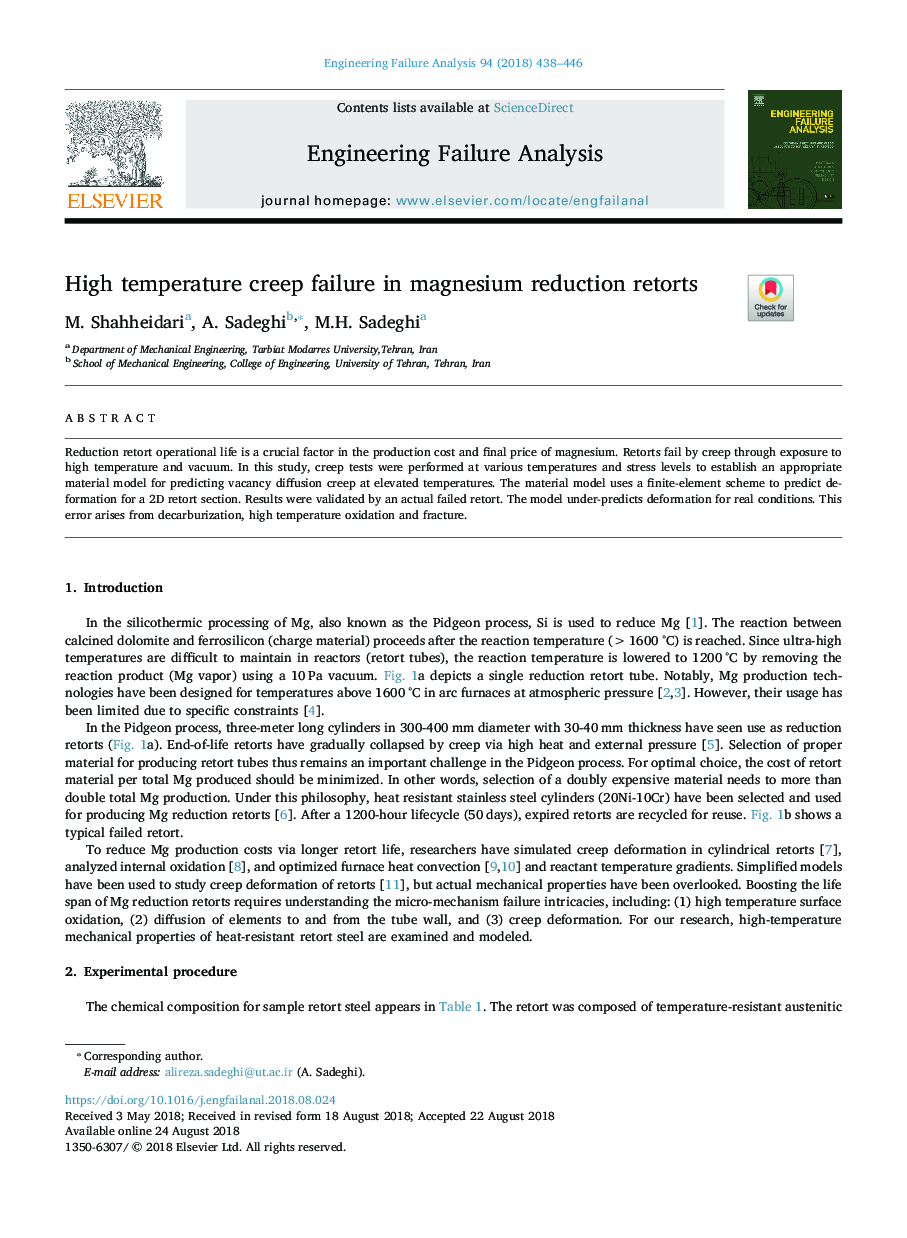| Article ID | Journal | Published Year | Pages | File Type |
|---|---|---|---|---|
| 11003863 | Engineering Failure Analysis | 2018 | 9 Pages |
Abstract
Reduction retort operational life is a crucial factor in the production cost and final price of magnesium. Retorts fail by creep through exposure to high temperature and vacuum. In this study, creep tests were performed at various temperatures and stress levels to establish an appropriate material model for predicting vacancy diffusion creep at elevated temperatures. Results indicate that at 900â¯Â°C and 5 to 25â¯MPa stress levels, creep is controlled by power-law mechanism while at similar stress conditions at 1000â¯Â°C and above, vacancy diffusion dominates. Study of microstructures and fracture surfaces supports the findings of creep tests by presenting sliding and fragmentation at the grain boundaries. The material model uses a finite-element scheme to predict deformation for a 2D retort section at 1200â¯Â°C. Results were validated by an actual failed retort. The model under-predicts deformation for real conditions (~8%). This error arises from decarburization, high temperature oxidation and fracture at the sliding boundaries.
Related Topics
Physical Sciences and Engineering
Engineering
Industrial and Manufacturing Engineering
Authors
M. Shahheidari, A. Sadeghi, M.H. Sadeghi,
